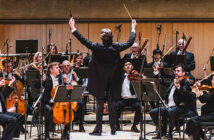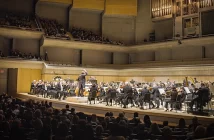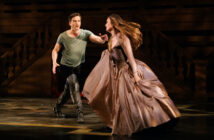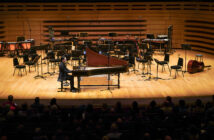Beethoven: Gods, Heroes, and Men
The Creatures of Prometheus/Symphony No. 3 “Eroica”
Orchestre symphonique de Montréal/Kent Nagano
Analekta AN2 9838 (73 min 51 s)
****
It is a sign of the times that the MSO has no major label willing to produce its CDs. Many fine orchestras are in the same situation and several of them – San Francisco Symphony, London Symphony, London Philharmonic, Boston Symphony, Toronto Symphony, etc. – have taken to producing their own recordings. Fortunately, the Canadian record company Analekta, with the help of the Department of Canadian Heritage, has been putting together several MSO projects. The latest venture, like the first one devoted to Beethoven’s Fifth Symphony, is devoted to the music of Beethoven (including the Third Symphony) and bears the grandiose title Gods, Heroes and Men. Analekta and Nagano announced today that a cycle of Beethoven’s Symphonies is now in the offing: the Sixth and Eighth Symphonies will be recorded in April, while the Ninth will be recorded in September.
The album includes some explanatory notes by conductor Kent Nagano, whose writing style tends to the formal and prolix, but he makes some interesting points nonetheless. Nagano sees the Prometheus myth as symbolic of the entire European Enlightenment period. Prometheus is the new self-creating man beholden neither to gods nor kings. Napoleon was the Prometheus incarnate of the time and Beethoven – at least until Napoleon declared himself emperor – greatly admired this great man who would remake the world in the name of freedom. And for Nagano, that explains Beethoven’s interest in the Prometheus myth, his ballet score based on it, and the use of the Prometheus musical theme in the last movement of his Eroica symphony. But Nagano goes a step further in his musings. If Prometheus was enlightenment and progress, this progress also had a dark side. Science frees man but also enables him to annihilate himself: “The “Promethean Spirit” – for Beethoven and his time, a hope. And for us today – a warning, or perhaps even worse, – a curse…”
The CD begins with five excerpts from Beethoven’s The Creatures of Prometheus ballet. Apart from the overture they are fragments and only occasionally compelling, but Nagano and the MSO play them with tremendous energy and attention to detail.
But the main business is the Eroica symphony. One might wonder why Nagano is recording it again only five years after making a DVD version with the Deutsches Symphonie-Orchester Berlin (ArtHaus Musik 101 4XX). Will customers buy two recent Nagano Eroicas? Perhaps the marketing emphasis will have to be “MSO” or “Made in Canada.”
Nagano is known to be highly interested in historically informed performance practice and there is plenty such evidence in this Eroica. Tempi are quick in accordance with Beethoven’s metronome markings, vibrato is used sparingly, and the timpanist uses hard sticks. In addition, Nagano’s phrasing often involves swelling up and then falling away, as compared to the more sustained phrasing customary in music of the romantic era. There are plenty of examples in the first movement, and then again in the horn trio in the Scherzo. This historically informed approach to phrasing and dynamics verges on affectation when it is used so often.
On the other hand, there is no denying that Nagano has gone over the score with infinite care and made decisions about the shape of every phrase and the length of every note. But in being meticulous he has not ignored the big picture. This performance is consistently engrossing and often exciting.
In many traditional performances of the Eroica the first trumpet plays the entire main theme fortissimo at the climax in the coda of the first movement. You will hear that in any performance conducted by Furtwängler, Toscanini, Walter, Karajan or Klemperer. The only problem is that Beethoven didn’t write it this way. Nagano gives us Beethoven’s version. It is a little less thrilling, but Nagano almost gets the job done by the sheer intensity of the playing, especially in the strings and timpani.
The recording team deserves a lot of credit for achieving such an optimum balance between clarity and reverberation. This recording is a triumph for Nagano, the MSO and Analekta.
Paul E. Robinson














